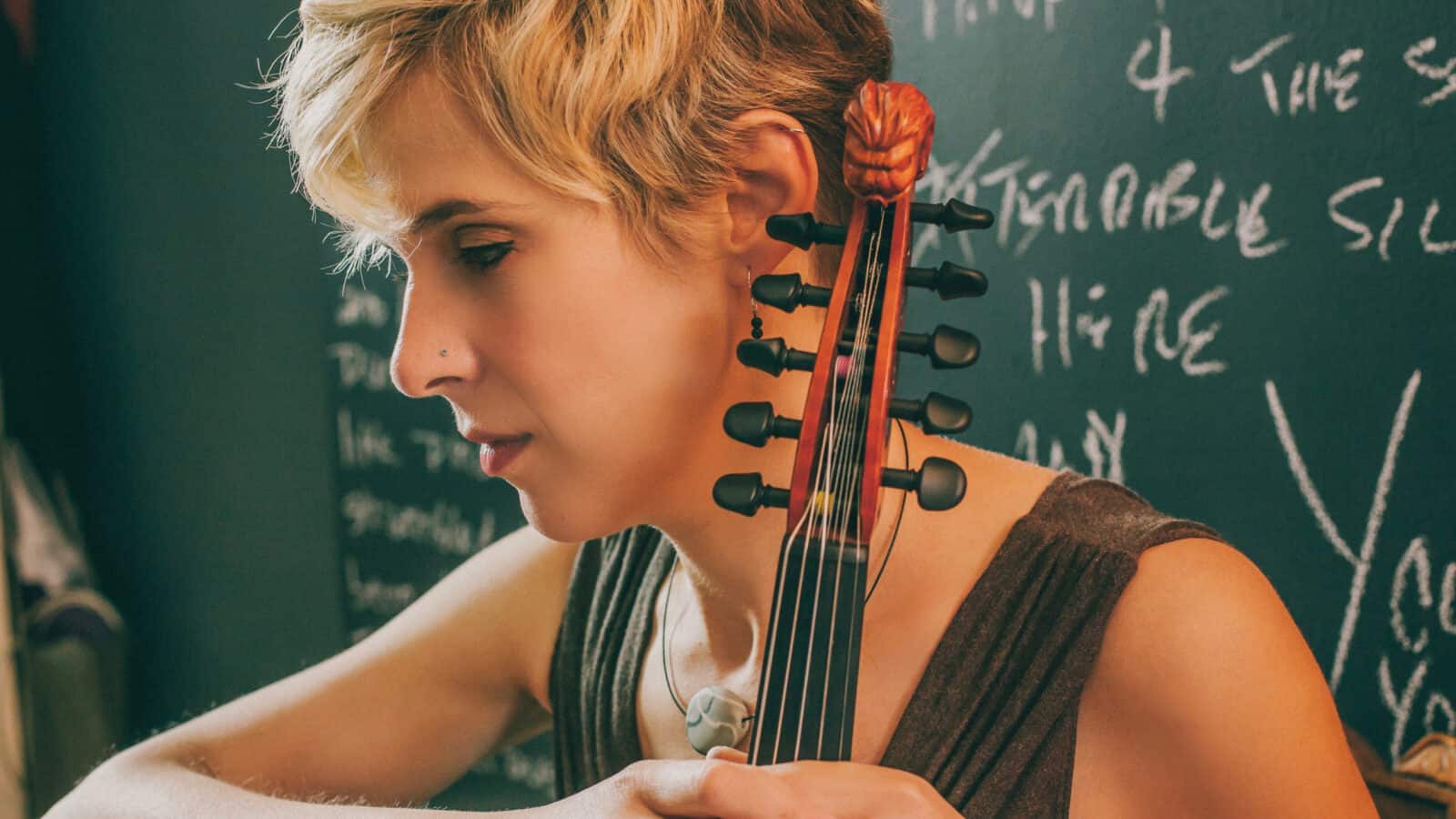The low voice of the strings carries an unexpected timbre, like the air on a summer night moving through forest on an open ridge. The sound shivers, teasing and sad, or maybe vulnerable, as anyone may be when they talk openly with someone they love.
Because you were in my soul like dawn, because you were what had to be …
Grammy-nominated jazz violinist Sara Caswell is playing Antônio Carlos Jobim’s ballad O Que Tinha de Ser on a Hardanger D’Amore — a contemporary cousin to a traditional Norwegian fiddle, one of a handful in the world.
She and her quartet will perform at LuluFest Lenox on July 15, celebrating her new album ‘The Way to You’ — her first solo album in 17 years. This week she talked about her music and her tour to share it. (This interview is lightly edited for clarity.)
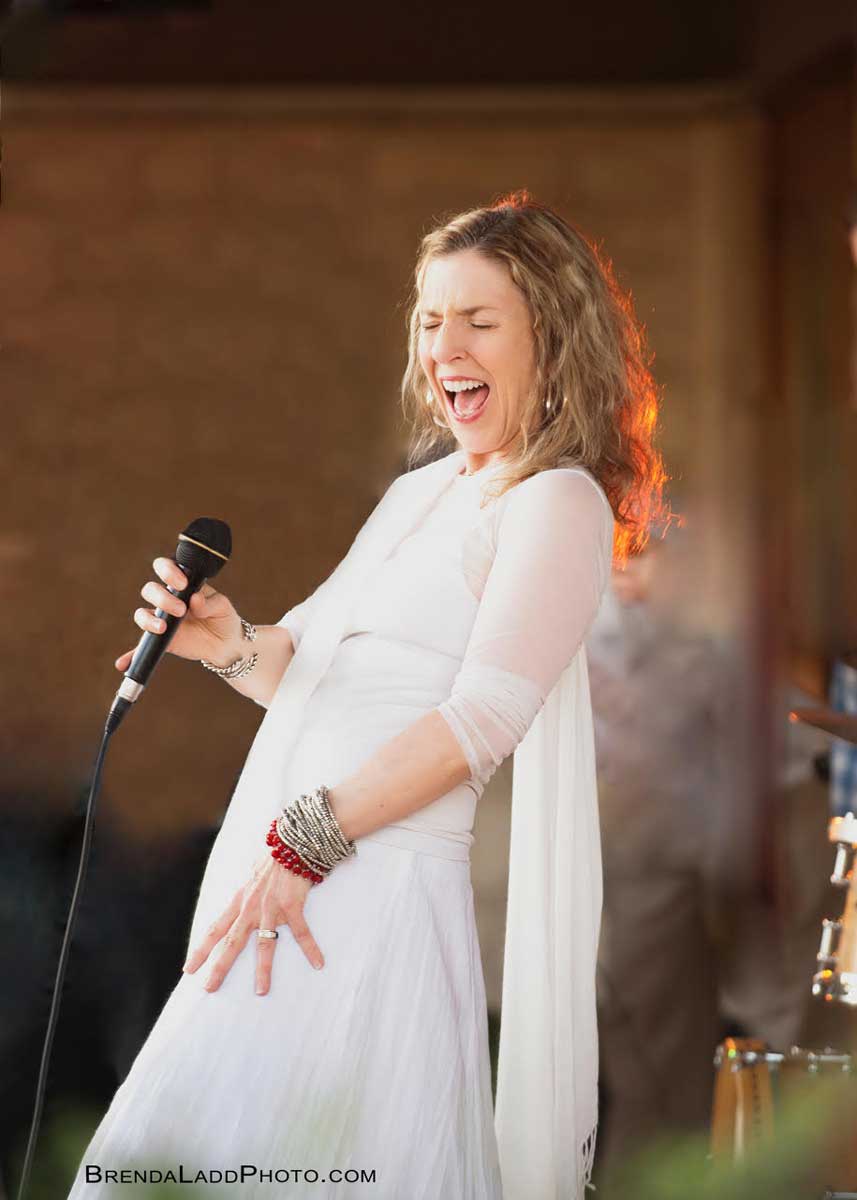
Jazz vocalist Suzi Stern belts out a high note.
LuluFest Lenox
LuluFest Producer/Director Suzi Stern opens the weekend with her quintet on July 14 at the Gateways Innn — Suzi Stern on vocals, George Oldziey on piano, Mary Ann McSweeney on bass, Paul Ostermayer on sax and Conor Meehan on drums.
July 15 — Elayne P. Bernstein Theatre at Shakespeare & Company, 70 Kemble St., Lenox
7 p.m. — Mary Ann McSweeney Urban Fado Project — Bassist and leader Mary Ann McSweeney, Jason Ennis on guitar, Todd Isler on drums and Sara Caswell on violin
8 p.m. — The Peggy Stern Quartet — renowned pianist and LuluFest Founder/Director Peggy Stern, Paul Ostermayer on sax and flute, Lew Scott on bass and Peter O’Brien on drums
9 p.m. — The Sara Caswell Quartet with Grammy nominated jazz violinist Sara Caswell, Jesse Lewis on guitar, Ike Sturm on bass, Jared Schonig on drums
The festival runs in collaboration with Berkshires Jazz, Inc. and The Ritenuto Foundation.
Q. You’ll be celebrating your new album this weekend. Will you tell me about The Way to You and where this new album begins for you?
A. It’s my first solo project since 2006 … the guys in my group, I’ve been working with them for over a decade. Guitarist Jesse Lewis, bassist Ike Sturm, and drummer Jared Schonig, they’re my musical family, my musical brothers.
We recorded it in 2019 with the idea of releasing it in 2020 … and we all know it happened. So it’s a joy to finally be able to share the music with audiences and to go on the road with these guys, and celebrate the music and the camaraderie and being able to give live performances again.
Q. How did you and the band all meet?
A. It’s so long ago now … we met on mutual gigs — you know. I remember first meeting Ike through a mutual friend of ours, a great alto saxophone player, Erica von Kleist. Ike and I got along immediately and have been dear friends ever since, and I think it was through Ike that I met Jared and Jesse.
And yeah, making music with them is a complete thrill. I love those guys, both as people and as artists, and I lose track of how many times we smile when we’re playing our shows together, winks, broad grins.
We share so much joy with each other when we’re making music — there’s nothing like that kind of communication — especially playing with musicians you’ve known for that long. We’ve all seen each other through thick and thin, and it comes through in the music. We trust each other.
Jazz in so many ways is all about taking risks. That’s when you reach those high points and those climaxes or those beautiful tender moments.
Jazz in so many ways is all about taking risks. That’s when you reach those high points and those climaxes or those beautiful tender moments. And those risks you take, those decisions you make in the moment, they’re not just affecting you, they’re also something you’re doing with your bandmates.
When you have that level of trust and you have that open communication, you feel safe, but you also feel like they’re going to have your back if something goes wrong. So it’s really the ultimate situation to be in.
Q. Almost the way that dancers will take each other’s weight and trade energy — you can support each other, you can challenge each other. … And three tunes on the new album are yours?
A. Yeah, the three songs that I wrote are Warren’s Way, which is a waltz, Last Call, a second-line shuffle that I wrote with the help of my partner, Michael Davis, and guitarist Dave Stryker, and then Spinning.
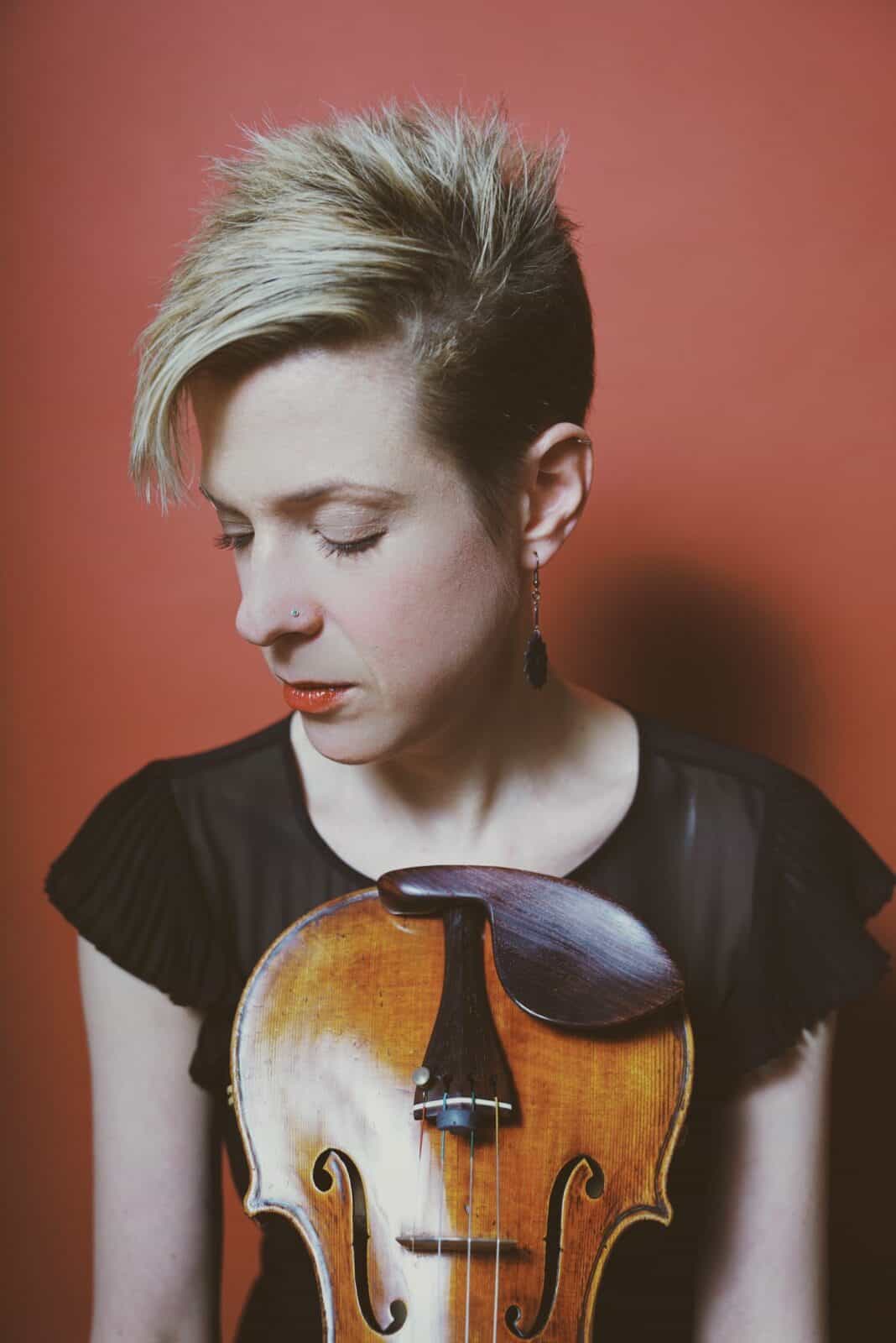
Grammy nominated jazz violinist Sara Caswell sits with her instrument against a dark orange wall. Press photo courtesy of the artist
Warren’s Way was written for Michael, my partner. His middle name is Warren … and he’s certainly one of the most kind, generous, and loving people that I’ve ever met, and so I tried to put that into the melody.
With spinning, I used to do a lot of cycling when I was younger, especially when my dad was alive, and sort of that cyclical spinning motion and the rise and the fall of those roads that we would ride on, I tried to get into the melody as well.
And Last Call gives you that loose and goosey feeling that you might have after a late night, something that brings smiles, a fun, flirtatious thing to do.
Q. As you were thinking about curating, curating, finding the music for the album … can you talk some about choosing and bringing together this particular group of songs? It seems like a beautiful range of music from different places, different backgrounds.
A. I’m very drawn to melody, and we have variety of composers, from Michel Legrand’s On My Way to You to Brazilian composer Egberto Gismonti’s 7 Anéis. We have three of my own pieces and a piece that a wonderful trumpeter, Nadia Nordhaus wrote for the group, and a piece by the bassist, Ike Sturm …
And the Antônio Carlos Jobim tune … I knew a lot about Jobim’s music, but this was just one that I didn’t know. I was checking out an obscure recording of Jobim’s, a variety of Jobim’s songs, and this one was buried toward the bottom of the list — and I was like, ‘oh my God, what is that song?’ (laughs) It had me in tears by the end of that. I was just so struck by the emotion and the beauty of the melody and the lyrics.
Q. It’s Beautiful. And I wanted to ask you about the Hardinger D’Amore.
A. Yeah, that song is the one I perform on the Hardanger D’Amore. So the Hardanger is a Norwegian folk fiddle … It’s a very ornately decorated instrument with line designs burning the wood all over the body, mother of Pearl Inlay and the fingerboard and the pegs sometimes. It’s used in a lot of dances.
The hardanger D’Amore is the invention of a luthier by the name of Salve Håkedal. He was commissioned to make a 10-string hardanger —the regular Hardinger has four strings on top and then a set of four sympathetic strings underneath the fingerboard. You never actually play them, they just resonate with the vibrations of the instrument.
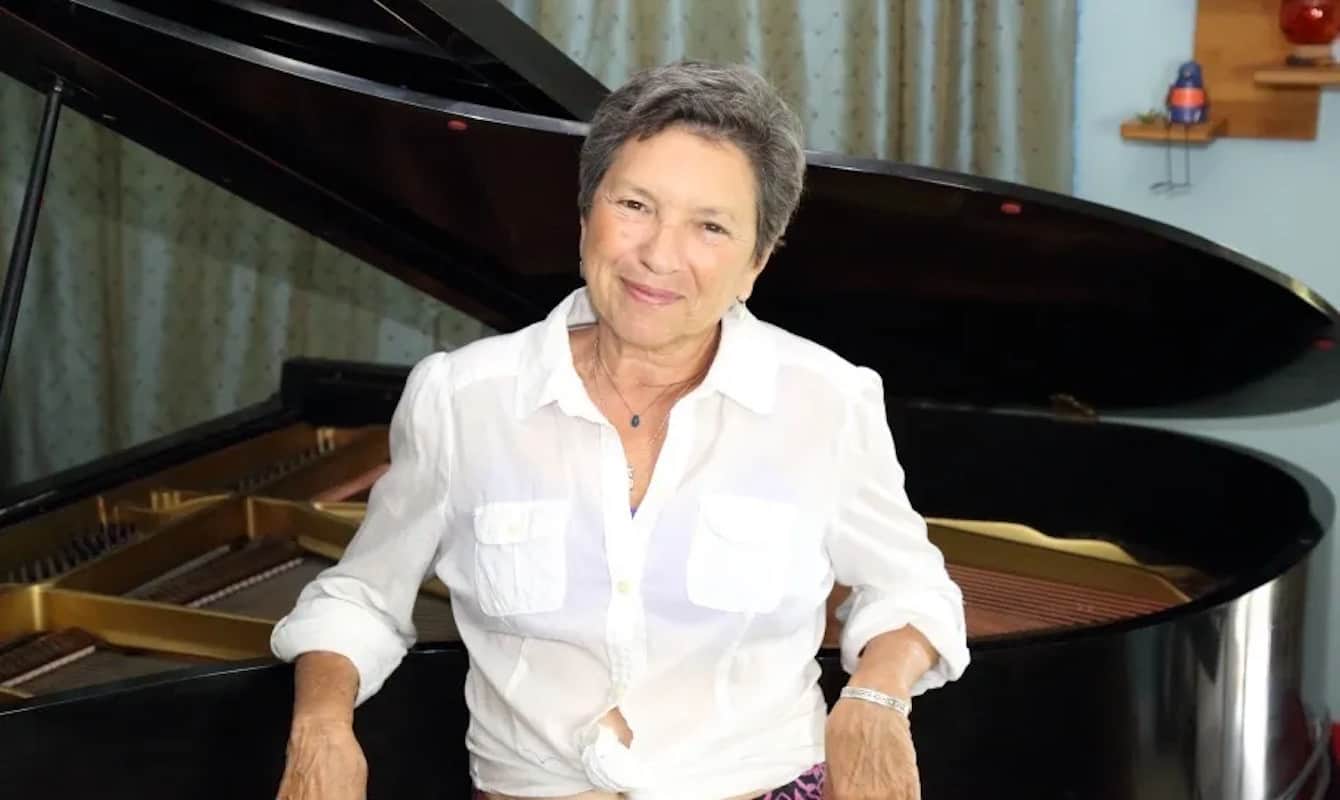
Jazz pianist Peggy Stern sits on a bench by her instrument, smiling. Press photo courtesy of Lulu Fest.
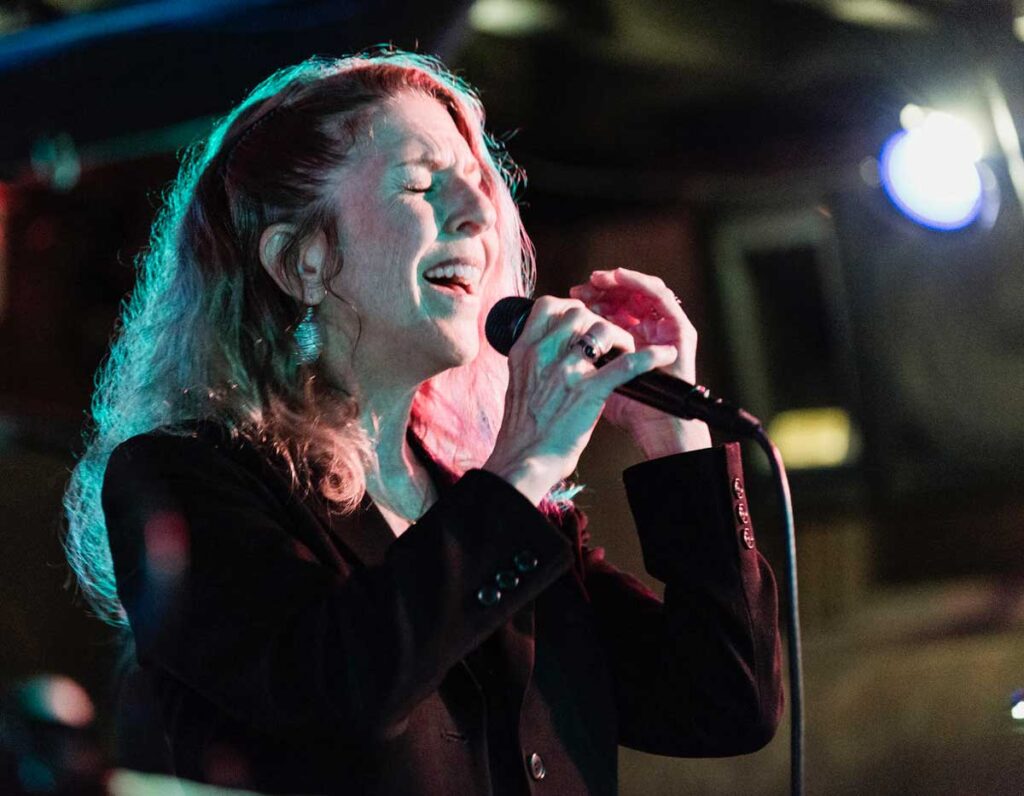

The Hardinger D’Amore has 10 strings, five on top and five underneath. He has made about 50 of them at this point. And I was very lucky to know a friend who got one of the first ones. I tried the instrument and I fell in love with it right away — the sound and the warmth and such a huge voice, such a deep and resonant tone.
So I did something spontaneous — I emailed the Luthier the next morning. … That was back in 2014, and I’ve just been loving exploring the instrument. And with wooden instruments like violins, cellos, and the violas, they continue to open and grow, and their tone will deepen over the years.
It’s why older instruments tend to be much more valuable than newer ones, because unless the luthier is using old wood, it takes a while for the instrument to find its voice and to evolve and to grow wise with age — like a wine, it gets better with time.
So this instrument, every day it’s a little bit different, and it’s been so much fun to explore. … It’s an old soul. It has so much depth and wisdom in its sound.
I tried the instrument and I fell in love with it right away — the sound and the warmth and such a huge voice, such a deep and resonant tone.
Q. What drew you to jazz music as a violinist to begin with?
A. I have my parents too to thank for that. My dad and my mom both got their PhD in musicology, and so they loved music history, and when my sister and I were growing up, we lived in a university town that has a great music school, Indiana University in Bloomington, so we were seeing classical performers, we were seeing jazz performers, we were seeing bluegrass music …
I started taking baroque violin lessons when I was around eight or nine and jazz lessons around the same time, and I loved it all. When you’re a kid, you don’t really think about the differences between music styles — you just look for the similarities, and it’s all fun. You’re having a great time exploring what makes music resonate and makes you want to get out of your seat and either dance or applaud.
I ended up gravitating toward classical and jazz music as my studies when I got into college, and I loved both … but I was definitely feeling creatively the most myself was when I was playing jazz music.
One of my mentors, David Baker, got me started listening to horn players. Miles Davis — I fell in love with with his playing in style right away _ Charlie Parker and Dizzy Gillespie, a lot of the bebop giants … As I grew older, Bill Evans was a huge influence, Freddie Hubbard. And I’m always I’m hearing about new players and getting exposed to new music.
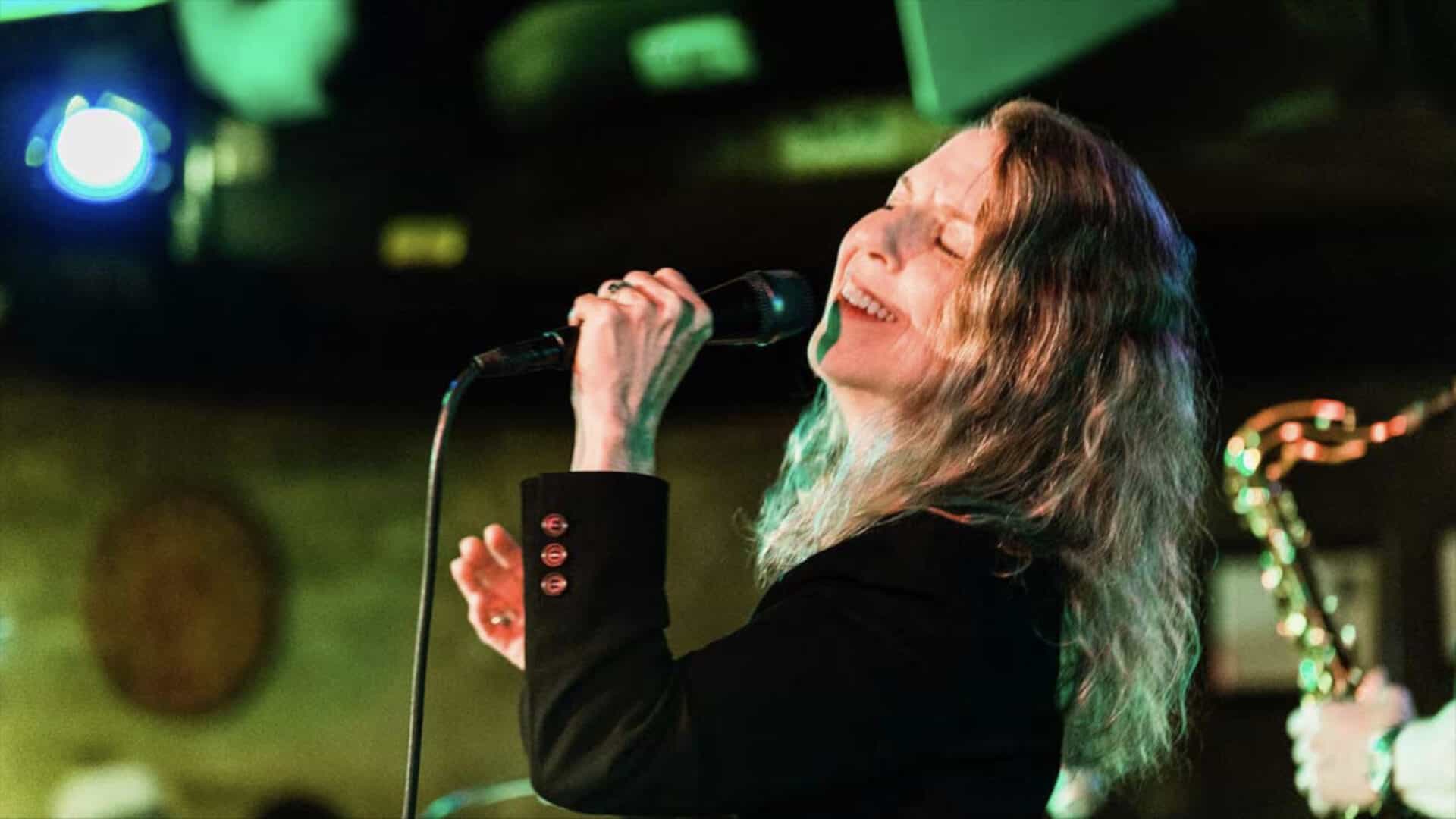
Jazz vocalist Suzi Stern performs in an outdoor concert at night. Press photo courtesy of the artist
Q. Highlighting women in jazz in this festival feels like a powerful, a powerful theme.
A. It is. I’m so grateful to to Suzie Stern and Peggy Stern both for for making this festival possible. I played LuluFest when it was in Texas, and I’d never been part of an all-woman festival like this before — and the camaraderie among all of us, and the opportunity to celebrate what we as women and band leaders are doing with our music — it was such a unique opportunity.
Q. Are there different perspectives, different stories that emerge, when women have a chance to be involved in the conversation and take the lead?
I have a sense that in a lot of jazz, a lot of the producers are often men. A lot of people making decisions about who performs are still often men. People will make assumptions about what women can play …
A. Oh, that has happened so many times. When I mention I’m a jazz musician, people say are you a singer? It’s so important to begin changing those stereotypes, and to put a spotlight on the women who’ve been making music for their entire lives in the medium.
We all have very unique stories to share, different ways of experiencing and walking through the world. And it comes through in our music.
That’s why it’s so important to have the kind of supportive environment where we can appreciate our differences and applaud our bravery — to say you’re supposed to be here. You’re supposed to be sharing your music.
Women are finally getting an opportunity to really be seen and to be raised up and to share what they love. I think it’s enlarged, and there are so many people, countless people to thank for creating those opportunities. Certainly Peggy Stern and Suzi Stern (co-founders of LuluFest) are part of that whole infrastructure helping to lift up women.
We want a reflection of what the gigging scene is like — where it’s diverse, where it’s where ensembles are mixed in gender and race and identity … We want to be unified.
It’s really exciting to see is someone like Terri Lyne Carrington — a fantastic drummer who’s been on the scene for a long time, been certainly a boundary breaker in so many ways. She and a team of folks at Berklee College of Music have put together the Berklee Institute of Jazz and Gender Justice.
They are bringing people together and encouraging conversation — because we all want to be in the same team with everybody — we want a reflection of what the gigging scene is like — where it’s diverse, where it’s where ensembles are mixed in gender and race and identity. That’s what we want. We don’t want it to be men and women. We want to be unified.
Q. So much of the roots of jazz seem open and accessible — everyone’s performing and playing with whatever instruments they have, getting together with neighbors. That seems foundational.
A. That idea of community and learning the music — in so many ways, jazz is a social activity. It’s a social art form.
It’s a music that you learn by sitting across from someone, and they’ll introduce you to ideas and you work on trying to learn them and absorb them and have them become a part of your language. That’s what creates that musical communication and lets it happen. … I think that’s what really makes the music fly.

